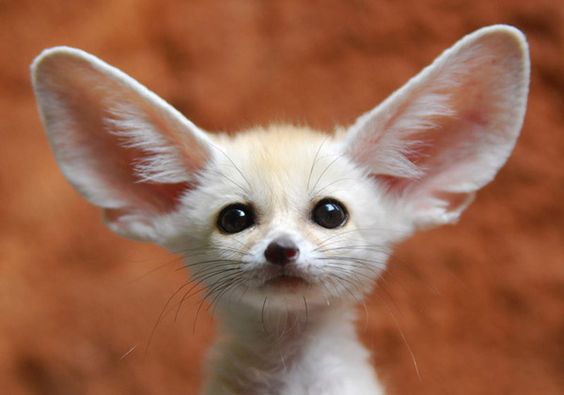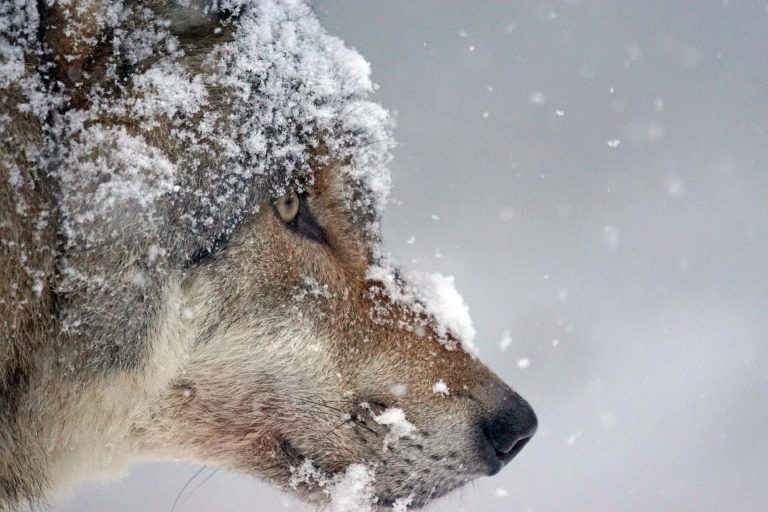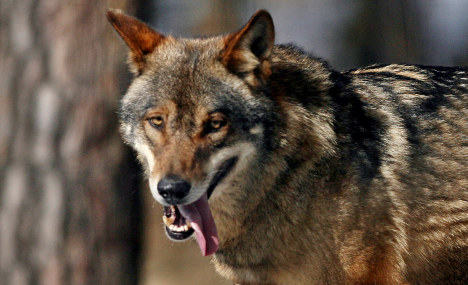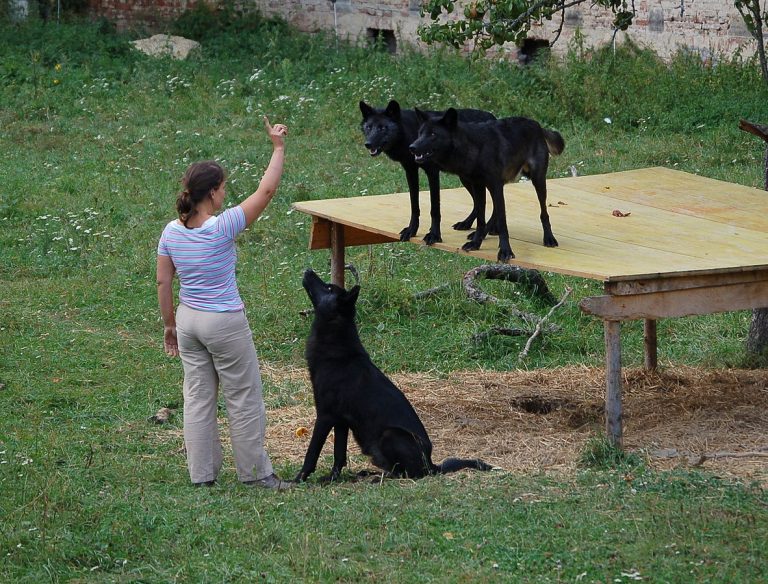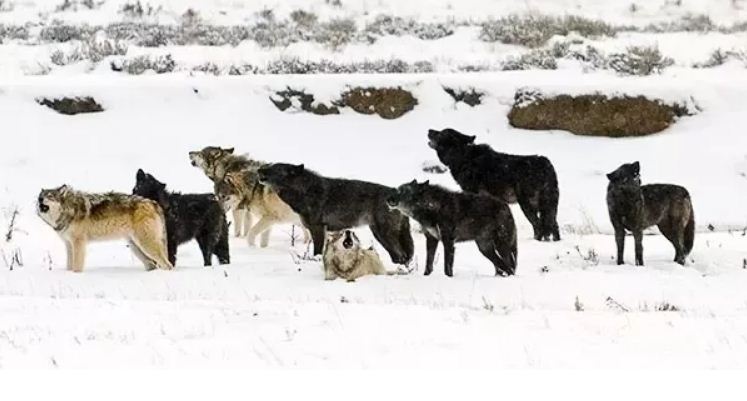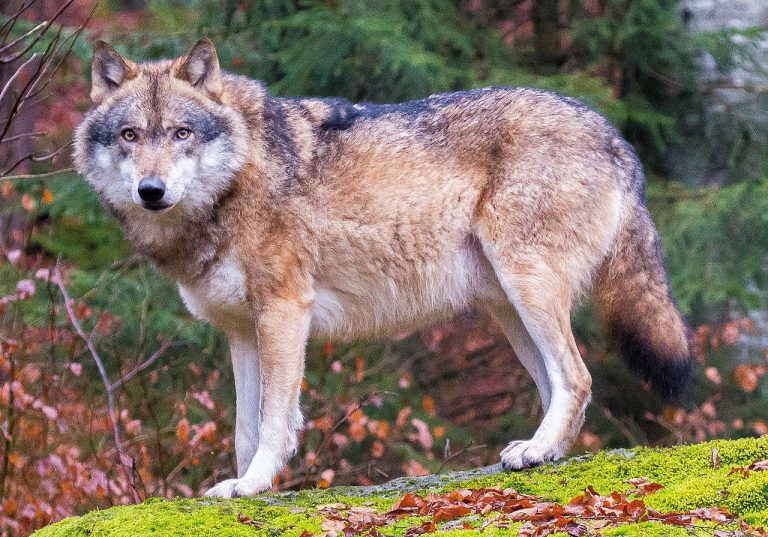7 Wild Creatures In The Same Family As Wolves
Animals that howl, scream, cluck, and even whistle are part of this motley crew of creatures in the same family as Wolves.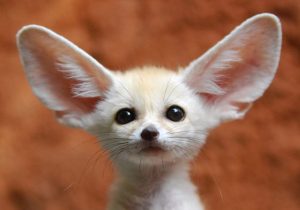
Whatever species, size or build they may be, all wolves belong to the Canidae family. All members of this family are referred to as Canids, they are all furry and have cutting/slashing teeth but that’s largely where most of the similarities end.
This family is so varied that most of the members are very distinct and don’t even look like they belong in the same family with wolves at all!
We already know about the domestic dog being in this family so below we are going to focus on just a few wild animals that belong in the same family with wolves.
7 Wild Creatures In The Same Family As Wolves
7) Dingos (Canis Lupus Dingo)
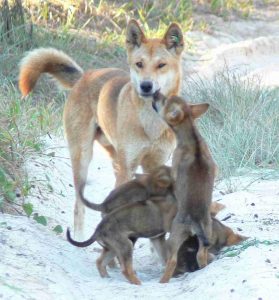
Though this animal is easy to confuse with a domestic dog, there’s nothing domestic about.
This Canidae member is a feral dog native to Australia. Dingos are the largest terrestrial predators in Australia with their usual target being livestock, kangaroos, rats, and rabbits. Dingos can communicate by growling, howling, and barking.
These animals have a very varied reputation from the almost romantic to the outright demonic. The early European settlers came to regard them as “devil dingos, ” evil, venomous, wolves, thieves, etc. This led to excessive killing and hunting of the species.
But admittedly, Dingos are adept as stealing and will steal human food, and eagles’ prey, and anything they think will make a tasty snack.
They are now considered as being in danger of extinction largely due to interbreeding with domestic dogs among other things.
Fun Fact: Dingos can swivel their heads up to 180 degrees. Humans can only do about 70 degrees, while owls do 270 degrees.
6) Dholes (Cuon Alpinus)
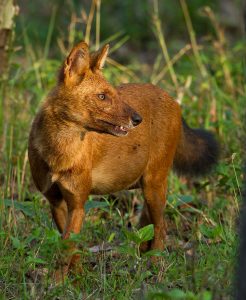
The Dhole is an Asian species that looks pretty much like a fox.
This is fearful predator in its native habitat. Because they live deep in thick forests, they have devised a means of sighting prey: they can leap up to 3.5 meters in the air to see above vegetation around then. Dholes are pack hunters with quite the appetite too, often eating several kilograms of meat in one seating
In fact, they are known to hunt prey many times their own size.
However, they are presently threatened by uncontrolled hunting, habitat loss and fragmentation, and reduction of prey. Consequently, their population has dropped to an all-time low of just 2,500 in the wild.
Fun Fact: Dholes are quite the vocalists! They are known as the whistling dog because of the incredible range of sound they produce like high-pitched whistles, screams, chicken-like clucks, and cat-like meows.
5) The Golden Jackal (Canis Auerus)
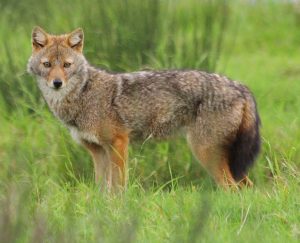
This member of the Canidae family is known by many names such as Eurasian golden jackal, common jackal, and Asiatic jackal.
This is a widespread species common to parts of Europe, South Asia, the Middle East and some areas in Asia Minor. Its highly adaptable diet may be largely responsible for it survival over the centuries as they eat almost anything from fruits to small ungulates, and even insects.
The golden jackal is one of the closest relative to wolves and it breeds successfully with Gray wolves and African wolves.
Fun Fact: Golden jackals love to howl and once one of them starts, others will quickly join the chorus.
4) Bush Dogs (Speothos Venaticus)
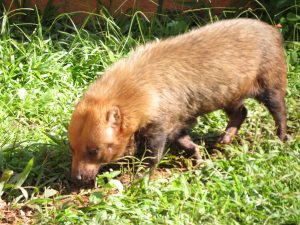
They have a stocky and squat little body that makes them look more like badgers on land but they are another species in the same family as wolves.
Interestingly, this animal is rarely seen except in areas like Suriname, Guyana, and Peru hence it was once assumed to be extinct. Its closest relatives are the maned wolf native to South America and the African wild dog.
They look harmless and small but when a group of them come together to hunt, they can make a formidable force.
Bush dogs also hunt in water and they are equipped with webbed feet for this semi-aquatic living. They are also commonly referred to as “vinegar dog” because of the strong and unmistakable smell of their urine.
Fun Facts: Bush dogs hide extremely well and are very elusive. You will find it hard to spot them even when they’re close.
3) African Wild Dog (Lycaon Pictus)
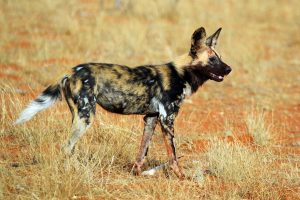
These animals can’t help but stand out with their multicolored fur and large pointy ears. Their scientific name even means “painted wolf.”
They live in large, very close-knit groups that can occupy vast territories in their native Sub-Saharan Africa. Painted wolves also communicate with a wide of vocalizations.
Just like wolves, they hunt in large packs. These hunting packs are highly efficient and even record more success at hunting than the efforts of more fearsome creatures like lions!
It’s not uncommon for them to record speeds exceeding 60 km/h when in hunting mode.
African wild dogs are now an endangered species.
Fun Facts: The African wild dog is so colorful that its names include African hunting dog, the African painted dog, painted hunting dog or even the painted wolf.
2) Fennec Fox (Vulpes Zerda)

The Fennec fox will always require a second look every time you see it just to be sure those ears are real.
Though they are much smaller than other members in the Canidae family they easily have one of the largest ears of all. Actually, these are the smallest foxes on earth often growing to just 16 inches while one ear could measure up to 6 inches.
Fennec foxes live in the sandy Sahara and other locations in Northern Africa. They are nocturnal creatures and that helps them handle the intense heat of the desert sun better. In addition, they spend most of the day shielded from the sun in underground dens.
Due to their particularly pleasant appearance, small build, and mild, playful disposition they have become a favorite of the exotic pet trade.
Fun Fact: Their large bat-like ears are not jut a decoration: they help to radiate body heat and keep the foxes cool.
1) Japanese Raccoon Dog (Nyctereutes Procyonoides Viverrinus)
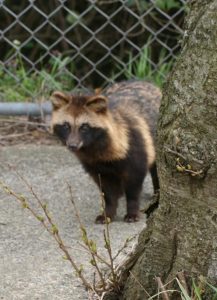
This has got to be the strangest one of all. The Japanese Raccoon Dog, or Tanuki, has all the features that should classify it as a raccoon but surprisingly, it’s in the same family as wolves too.
The furry, multicolored face, and body structure makes it look nothing like wolves or even dogs at all. So its close resemblance to raccoons earns it the common name raccoon dog.
This is the only member of the family that hibernates in winter.
Fun Facts: In ancient times the Tanuki played many parts in Japanese folklore including that of a jolly mischief maker and a shapeshifter.

